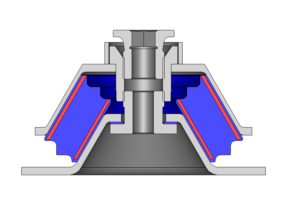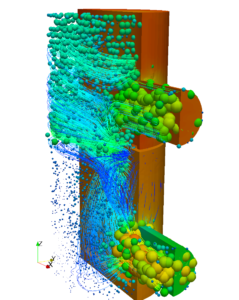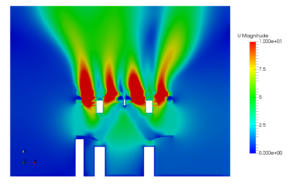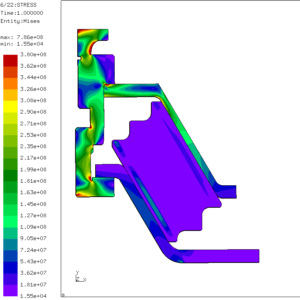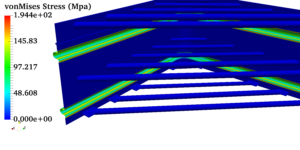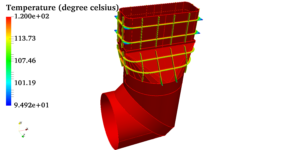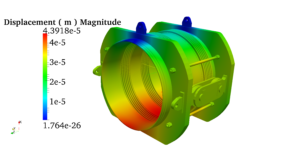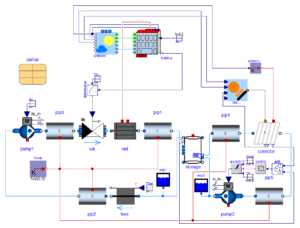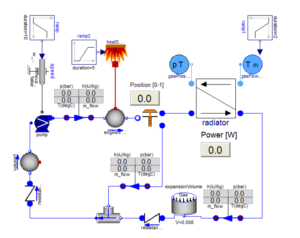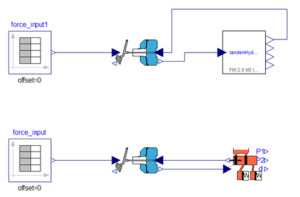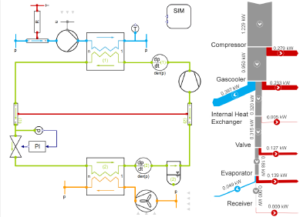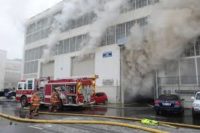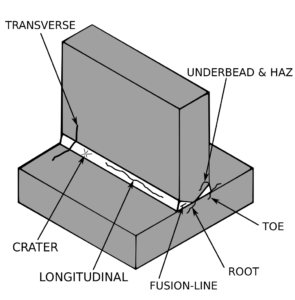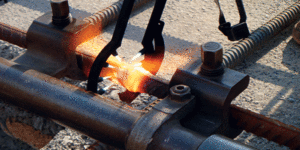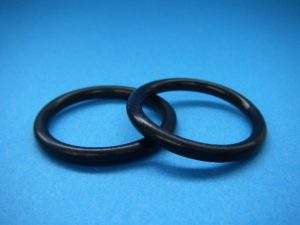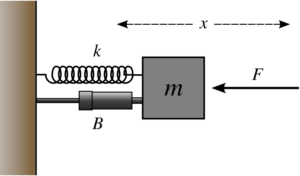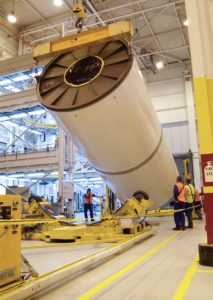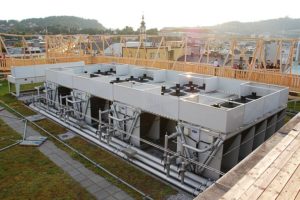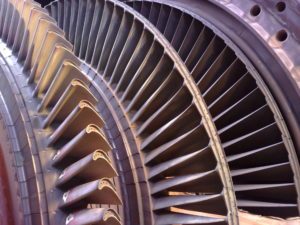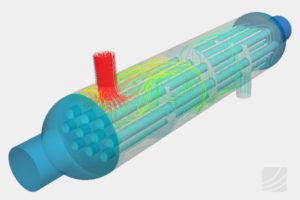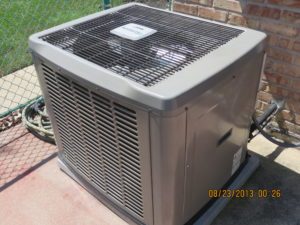CFD analysis of stacked condensers in a high-rise apartment
CFD Analysis of Stacked Condensers
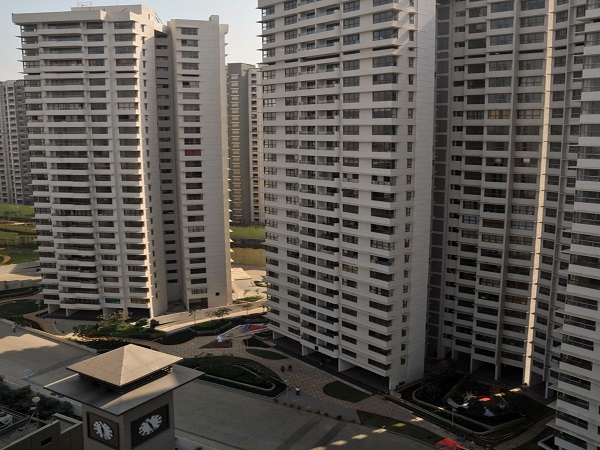
Ductable air conditioning systems generate good amount of heat owing to their higher capacities. In a high-rise apartment where such systems are used the ambient air temperature near the out door condenser unit (ODU) rises due to heat rejection. A gravity driven flow is expected because of density variations resulting from high temperatures. If the ODU’s are placed one above other, due to natural convection, temperature near the top-most ODU will be a lot higher. So the refrigerant in ODU’s towards the top will not be able to reject heat to a hotter ambient effectively. This may result in underperformance of ACs after a particular elevation. A computational fluid dynamic study will be able to figure out such effects and corrective actions can be taken.
Bulk transport of fluid due to temperature related density changes is natural convection. Density change triggers a buoyancy force in fluid control volume and results in convection current. Rayleigh and Grashof numbers are the non-dimensional quantities which are used to characterize natural convection flows. So while solving Navier-Stokes equations body force terms are to be considered. Gravity specific boundary conditions are specified for the domain. CFD tools such as OpenFOAM have dedicated solvers for buoyancy driven flows.
High-rise apartment taken for the simulation is about 90 meters high with 26 storeys and 1 dedicated fire floor. ODU’s of AC’s are kept in a stack which is confined in 3 sides and open to ambient in one of the sides. A condenser unit consists of fins through which refrigerant pipes pass. Refrigerant carry heat from the indoor unit through an evaporative coil and flow to the condenser coil in ODU. A fan is placed after the condenser coil to enhance heat transfer. This whole unit can be equivalently replaced with a simplified ODU for this study.
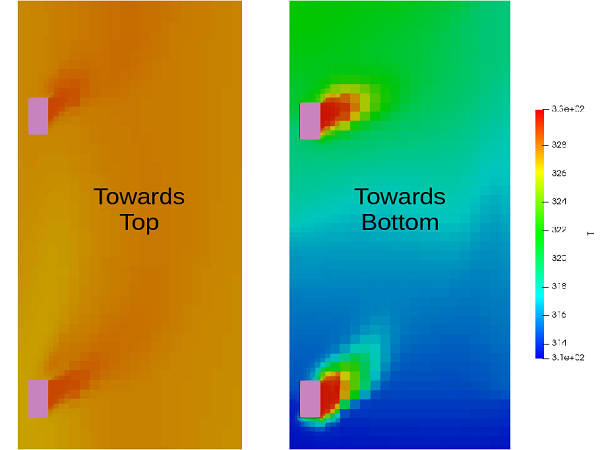
Figure in this study shows the variation of temperature near the top two outdoor AC units in contrast to bottom two outdoor AC units. The ambient temperature near the top-most ODU is nearly 328 K and near the bottom-most ODU is 315 K. The hot air is thrown away by a fan of ODU nearly 0.7 meter away. As the outdoor unit operates near to 330 K, the top-most can not reject heat to ambient air as desired for normal operation of the AC. In order to avoid such a situation, higher throw capacity fans could be installed in the ODUs. Again, the direction in which the fans are throwing air, there exists a building wall. In order to avoid fan throw hitting the opposite wall and bouncing back, additional row of fans which can direct the ODU flows towards ambient side of the stack can be used. A CFD study can be used to finalize the appropriate mitigation strategies in a cost effective manner.

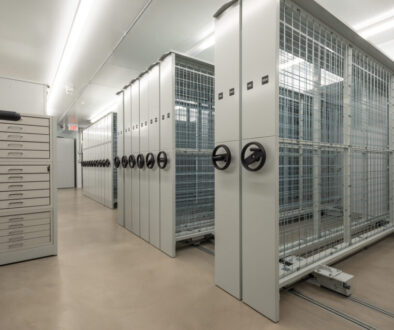
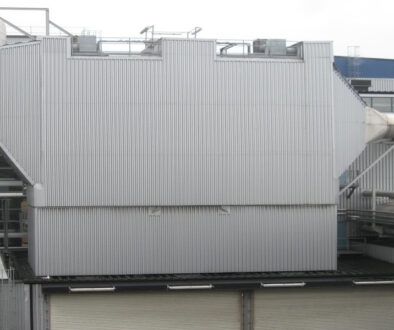
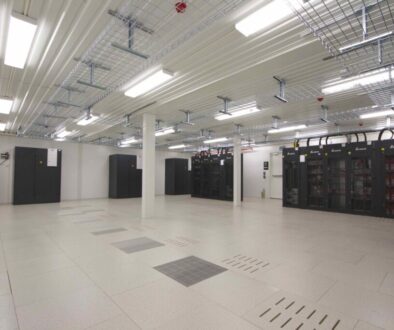
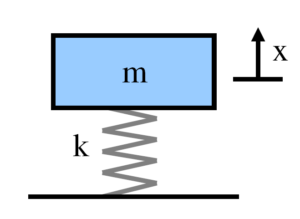
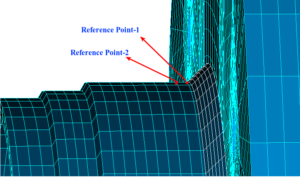
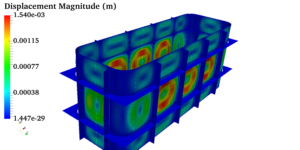 Pressure vessels, pipes, expansion joints etc. are basic equipments for process industries. Pressure vessels are vessels working under internal, external or vacuum pressure, and possibly subjected to high temperature. Proper design and analysis is very important for the pressure vessels, as their failure can cause lot of hazards. Codes/ standards are used in the design phase, followed by analysis to ascertain stresses are within the allowable range. ASME provides wide range of guidelines for the proper design of such vessels.
Pressure vessels, pipes, expansion joints etc. are basic equipments for process industries. Pressure vessels are vessels working under internal, external or vacuum pressure, and possibly subjected to high temperature. Proper design and analysis is very important for the pressure vessels, as their failure can cause lot of hazards. Codes/ standards are used in the design phase, followed by analysis to ascertain stresses are within the allowable range. ASME provides wide range of guidelines for the proper design of such vessels.